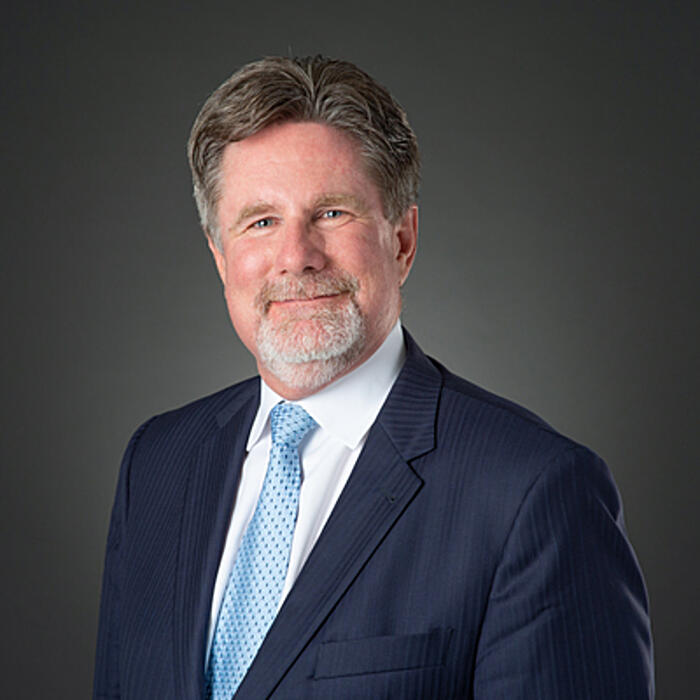vcfo VIBE February, 2021 Newsletter


The word “transgender”, or trans, is an umbrella term for people whose gender identity is different from the sex assigned to them at birth. Although the word “transgender” and our modern definition of it only came into use in the late 20th century, people who would fit under this definition have existed in every culture throughout recorded history. For example, in American Indian culture transgender people are two spirited.
Sex and gender are two different concepts. A person’s sex refers to his or her biological status as either male or female. The determination of a person’s biological sex depends primarily on various physical characteristics, including chromosomes, reproductive anatomy, and sex hormones.
Gender is a societal construct that deals with the expected behaviors, roles and activities typically associated with the different sexes. Gender roles, which vary across cultures, influence how people act and feel about themselves.
Sexual orientation is different from gender identity. Sexual orientation is a person’s physical, emotional, or romantic attraction to another person, while gender identity is about one’s own sense of self. Transgender people may be straight, lesbian, gay, or bisexual. For example, a transgender woman that is attracted to men is straight and a transgender woman that is attracted to women is a lesbian.
The trans community is incredibly diverse. Some trans people identify as trans men or trans women, while others may describe themselves as non-binary, genderqueer, gender non-conforming, agender, bigender or other identities that reflect their personal experience.
The rights of the transgender community and the rights of an individual to transition and be recognized in the gender they identify with vary by state. Until June 2020, Congress had not passed any laws specifically protecting transgender people from discrimination in employment, housing, healthcare, and adoption. Even with two recent SCOTUS rulings, the protections for transgender people are very limited under federal law. Here are just some areas where the transgender community face inequality.
Identity Documents
Identity documents are a major area of legal concern for transgender people. Different procedures and requirements for legal name changes and gender marker changes on birth certificates, driver’s licenses, social security identification and passports exist, and can be inconsistent. Many states require gender confirmation surgery to change a transgender person’s name and gender marker so that it matches their identity.
Documents which do not match each other can present difficulties in conducting personal affairs, particularly those which require multiple, matching forms of identification. Also, having documents which do not match a person’s gender presentation has been reported to lead to harassment, discrimination, and violence.
Employment
In June 2020 SCOTUS ruled for the first time on a case directly regarding transgender rights. The Supreme Court held that Title VII of the Civil Rights Act 1964 extends protections to individuals in employment who are transgender. Discrimination on the grounds of transgender status is a form of discrimination based on sex.
Prior to the rulings, four states (Alaska, Arizona, Minnesota, and Missouri) had not enacted specific protections based on transgender status in any employment, and 22 states had extended protections to public employment only. Even with these changes, it is still legal to use gender identity as a reason to deny employment to a transgender person.
Healthcare
Transgender people confront two major legal issues within the healthcare system, access to health care for gender transitioning and discrimination by health care workers. Even though there is medical consensus that hormone therapy and gender confirmation surgery are medically necessary for many transgender people, the kinds of health care associated with gender transition are sometimes misunderstood as cosmetic, experimental, or simply unnecessary. This has led to public and private insurance companies denying coverage for such treatment.
Transgender people also sometimes experience discrimination by healthcare professionals, who have refused to treat them for conditions both related and unrelated to their gender identity. A 2017 report by the Center for American Progress found 29% of transgender people reporting they were denied care by a medical provider in the preceding year due to their gender identity or sexual orientation. The same study found that 21% of trans people reported medical providers used abusive or harsh language when they sought care.
Hate Crimes Legislation
Federal hate crimes legislation include limited protections for gender identity. The Hate Crimes Prevention Act of 2009 criminalized “willfully causing bodily injury (or attempting to do so with fire, firearm, or other dangerous weapon)” on the basis of an “actual or perceived” identity. However, protections for hate crimes motivated on the basis of a victim’s gender identity or sexual orientation is limited to “crime affecting interstate or foreign commerce or occurring within federal special maritime and territorial jurisdiction.” This limitation only applies to gender identity and sexual orientation, and not to race, religion, or national origin. Therefore, hate crimes which occur outside these jurisdictions are not protected by federal law.
22 states plus Washington D.C. have hate crimes legislation which include gender identity or expression as a protected group. 27 states have hate crimes legislation which exclude transgender people. Six states have no hate crimes legislation at all. The result is that many crimes against transgender people go unreported or uninvestigated.
We can support transgender people in many ways:

By Vira Trevino-Garcia
As we continue to address flaws in the recruitment process, the discriminations that LGBTQ+ candidates face remain under addressed. In order to create a bias-free recruitment and hiring process, it’s important that recruiters and hiring managers take deliberate steps to advocate for LGBTQ+ equality. As we work to attract top talent that is diverse, we must ensure that lesbian, gay, bisexual, transgender, and queer job seekers feel welcome, safe and encouraged to apply for open positions.
Here are a few suggestions of ways to promote LGBTQ+ equality in the recruitment process:
Updating the recruitment and hiring process to ensure all people from different cultures, genders, races, sexual orientations, and socioeconomic backgrounds feel welcomed will help create a diverse workforce and add to job satisfaction and retention.

Name: Ashford Chancelor
Position: Dallas Practice Manager & Consulting CFO
Years with vcfo: 4 years (in May!)
If you could pick one theme for vcfo to turn into a book about the company, what would it be?: I think this should be focused on the dramatic differences we have made through our work. It’s so much more than it may appear. Over the last twenty five years, vcfo has woven a powerful mosaic in which our work has transformed companies, whether by helping build them into a more robust version of themselves, saving them from financial missteps or disasters or by assisting to pivot companies into a more sustainable future. The end effect of all this is vcfo has helped individuals, families, companies and the public good more than we can possibly know.
What are three words to describe vcfo?: Turning information into knowledge and then into wisdom (I know. More than three words 😊).
What does diversity and inclusion mean to you?: Embracing everyone with warmth, compassion and empathy, regardless of their background beliefs or heritage.

Sex – The classification of a person as male or female. At birth, infants are assigned a sex, usually based on the appearance of their external anatomy.
Gender Identity – A person’s internal, deeply held sense of their gender. For transgender people, their own gender identity does not match the sex they were assigned at birth.
Gender Expression – External manifestations of gender, expressed through a person’s name, pronouns, clothing, haircut, behavior, voice, and/or body characteristics.
Sexual Orientation – Describes a person’s enduring physical, romantic, and/or emotional attraction to another person. Gender identity and sexual orientation are not the same.
Transgender (adj.) – An umbrella term for people whose gender identity and/or gender expression differs from what is typically associated with the sex they were assigned at birth. People under the transgender umbrella may describe themselves using one or more of a wide variety of terms – including transgender. Some of those terms are defined below. Use the descriptive term preferred by each person. Many transgender people are prescribed hormones by their doctors to bring their bodies into alignment with their gender identity. Some may also undergo surgery. But not all transgender people can or will take those steps, and a transgender identity is not dependent upon physical appearance or medical procedures. DO NOT use the term “transgendered”.
Transsexual (adj.) – An older term that originated in the medical and psychological communities. Still preferred by some people who have permanently changed, or seek to change, their bodies through medical interventions, including but not limited to hormones and/or surgeries. DO NOT use this term
Trans – Used as shorthand to mean transgender. Sometimes used to be inclusive of a wide variety of identities under the transgender umbrella. Because its meaning is not precise or widely understood, be careful when using it with audiences who may not understand what it means. Avoid unless used in a direct quote or in cases where you can clearly explain the term’s meaning in the context of the story.
Cross-dresser – While anyone may wear clothes associated with a different sex, this term is typically used to refer to men who occasionally wear clothes, makeup, and accessories culturally associated with women. This activity is a form of gender expression and is not done for entertainment purposes. Cross-dressers do not wish to permanently change their sex or live full-time as women. This replaces the term “transvestite”, which is considered extremely derogatory.
Transition – Altering one’s birth sex is not a one-step procedure; it is a complex process that occurs over a long period of time. Transition can include some or all of the following personal, medical, and legal steps:
The exact steps involved in transition vary from person to person. DO NOT use the phrase “sex change”.
Gender Confirmation Surgery (GCS) – Refers to doctor-supervised surgical interventions, and is only one small part of transition (see above). DO NOT use the phrase “sex change operation”. DO NOT refer to someone as being “pre-op” or “post-op”. Not all transgender people choose, or can afford, to undergo medical surgeries.
Gender Dysphoria – In 2013, the American Psychiatric Association released the fifth edition of the Diagnostic and Statistical Manual of Mental Disorders (DSM-V), which replaced the outdated entry “Gender Identity Disorder” with “Gender Dysphoria”, and changed the criteria for diagnosis. The necessity of a psychiatric diagnosis remains controversial, as both psychiatric and medical authorities recommend individualized medical treatment through hormones and/or surgeries to treat gender dysphoria. Some transgender advocates believe the inclusion of Gender Dysphoria in the DSM is necessary in order to advocate for health insurance that covers the medically necessary treatments recommended for transgender people.
Cisgender – A term used by some to describe people who are not transgender. “Cis-” is a Latin prefix meaning “on the same side as”, and is therefore the antonym of “trans”.
Gender Non-conforming – A term used to describe some people whose gender expression is different from conventional expectations of masculinity and femininity. Please note that not all gender non-conforming people identify as transgender, nor do all transgender people identify as gender non-conforming.
The vcfo VIBE Committee wants all team members to be included and represented. Click here for a diversity calendar to see a wide variety of cultural and religious events from around the world.
Should you wish to do further research on your own time, we have provided recommended reading:
This is a publication of the vcfo VIBE Committee.
We are stronger when we are equal.